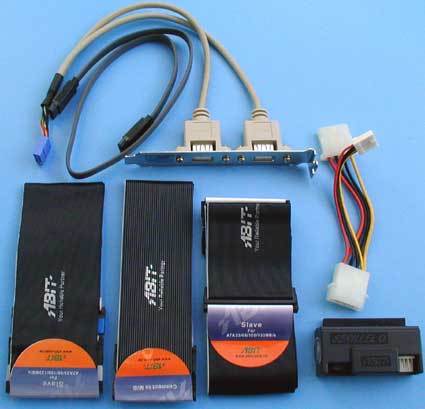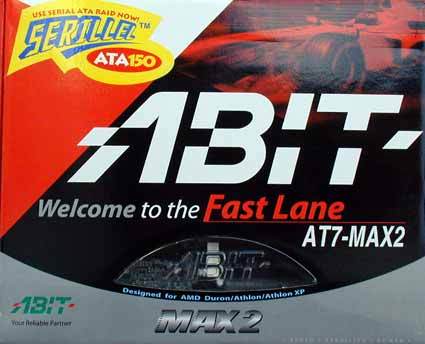DDR400 for Athlon: A Comparison of 9 Motherboards
The Boards
Abit AT7-MAX2
Board revision: ?
BIOS version: ?
As soon as you unpack the new Abit board, you are sure to be impressed by the many ports it boasts. In addition to the obligatory PS/2 ports for keyboard and mouse, it offers a whopping six usable USB 2.0 ports, two IEEE1394/ FireWire ports, one RJ45 jack for networking or Internet access with DSL, and a whole row of jacks for the sound system. On top of that, there's an optical digital outlet in the middle of all of these ports.
Left to right: PS/2 ports, 4x USB, 2x FireWire, optical digital audio output and five jacks for the sound system, plus two additional USB ports and network hook-up. You really can't pack in more, but you have to live without serial and parallel ports.
An adapter cable is included so you can use two of the additional four USB 2.0 ports. Abit makes this possible with an additional USB controller from VIA (VT6202). The network controller is a VT6103, also from VIA Technologies.
Abit uses an IDE RAID controller from HighPoint (HPT-374), which can address four channels instead of the customary two. Two of these have been outfitted with IDE bridges for operating Serial ATA devices; the other two offer conventional ATA ports.
Another claim to fame - only the Shuttle and Abit boards provide four DIMM sockets. Though only one slot may be occupied in DDR400 mode, and at least two slots in DDR333 mode, this many slots makes it possible to upgrade up to 3.5 GB RAM (with registered DIMMs).
Get Tom's Hardware's best news and in-depth reviews, straight to your inbox.

Patrick Schmid was the editor-in-chief for Tom's Hardware from 2005 to 2006. He wrote numerous articles on a wide range of hardware topics, including storage, CPUs, and system builds.






